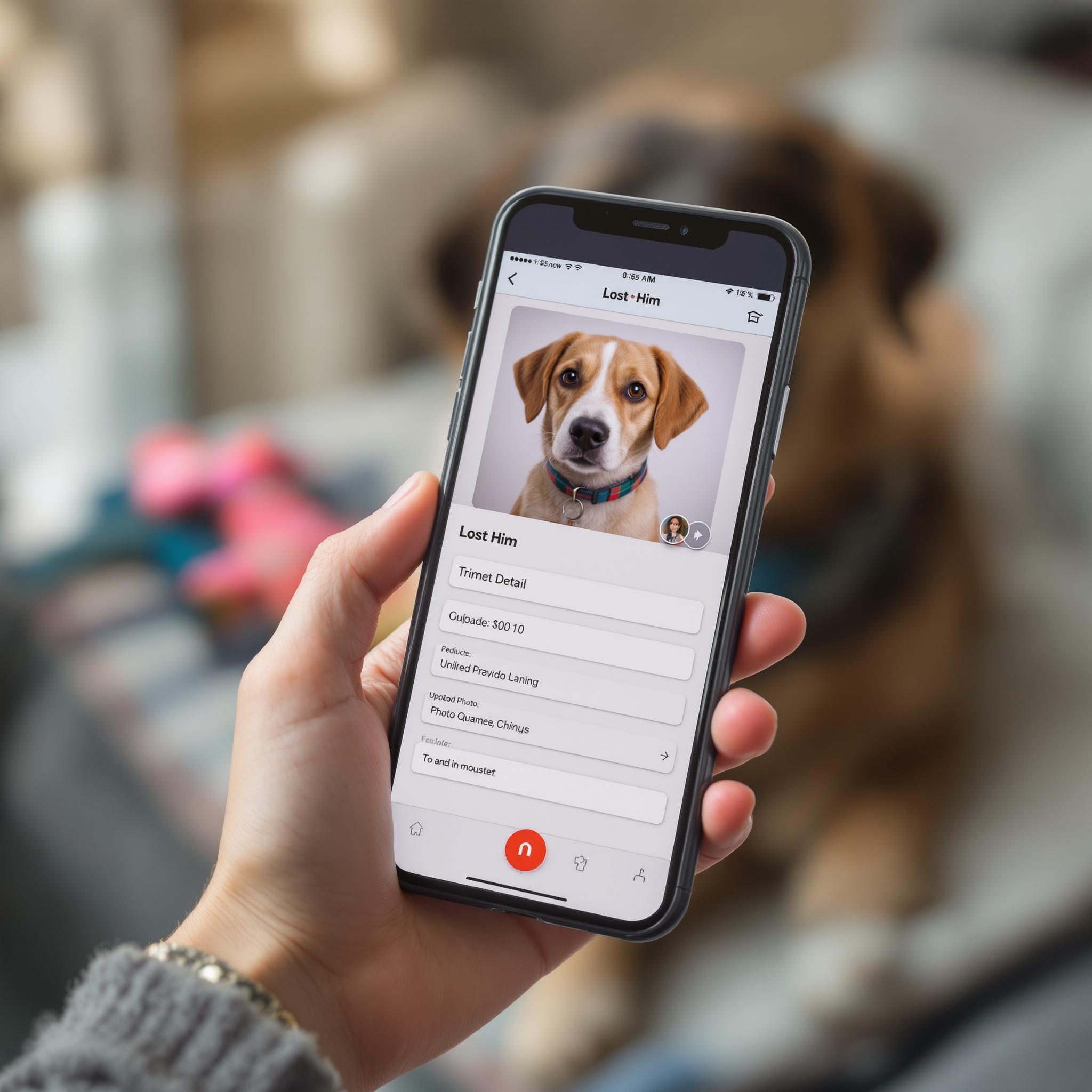How to Properly Report Your Lost Pet on Lost’Him
By Lost'Him Team • February 22, 2025

When your pet goes missing, every minute counts. The Lost’Him app is designed to help you quickly find your companion through a supportive community and an intelligent algorithm.
However, to maximize your chances, it is essential to fill out your report correctly. The more precise and complete your information is, the better the algorithm and users can assist you.
Here is a detailed step-by-step guide to making an optimal report and increasing your chances of finding your lost pet.
1. Take or Select High-Quality Photos
Photos are the first thing users see and a key factor for the identification algorithm. A blurry, overly zoomed, or poorly framed image reduces your chances of success.
👉 Tips for Effective Photos:
- Cover Photo (Main Image):
- Choose a mid-range shot where the animal is fully visible.
- Avoid close-up shots of the face—body shape, colors, and markings should be clear.
- Use a neutral background if possible to make the animal stand out.
- A recent photo is preferable.
- Two Additional Photos:
- Left profile
- Right profile
- 📍 Blurry or pixelated images.
- 🚫 Photos taken too close or too far away.
- 🌑 Nighttime or poorly lit images.
- 🐾 Using an old photo (appearance may change over time).
- Coat/feather/scales color.
- Eye color.
- Snout/nose/beak shape.
- Overall body shape.
- Gender: Male / Female / Unknown.
- Size.
- Build.
- Friendly or fearful? Does the animal avoid strangers or seek attention?
- Specific reactions:
- Barks at car noises.
- Approaches children.
- Loves treats or squeaky toys.
- Signs of stress: Heavy panting, hiding, running in a straight line.
- Distinctive features: Disabilities, limping, visible scars, cropped ear, short tail, unique collar.
- Familiar locations: Does your pet frequently visit certain areas, farms, or trails?
- Medical issues:
- Requires medication.
- Risk of worsening illness.
- Specific behaviors: \"Responds to ‘come’\" or \"Afraid of bicycles.\"
- Exact date the pet went missing (or approximate date if uncertain).
- Precise location: Full address if possible or select the location on the map.
- Clearly state it in your report.
- Report it immediately to the police or local authorities.
- Add relevant details if you noticed:
- A suspicious vehicle.
- Unfamiliar individuals near your property.
- Surveillance footage if available.
- ✅ Upload three high-quality photos (one main and two side profiles).
- ✅ Provide a detailed physical description (coat, eyes, snout).
- ✅ Include general characteristics (gender, size, weight, breed).
- ✅ Specify behavior and unique traits.
- ✅ Add relevant additional information.
- ✅ Clearly state the date and location of the loss.
- ✅ Indicate if the pet was stolen.
💡 Lost’Him’s algorithm uses visual reference points to detect similarities with other reported animals.
💡 Animals are often recognized based on distinctive details visible from different angles.
❌ Common Mistakes to Avoid:
💡 If you don’t have recent pictures, take some now as a precaution in case your pet ever gets lost.
2. Provide a Precise Description of the Animal’s Physical Features
Detailed descriptions complement photos and enhance search effectiveness.
👉 Essential Information to Include:
💡 Combining these details with photos increases the chances of accurate matches.
3. Describe Behavior and Unique Traits
Behavior is often a key factor in identifying an animal.
👉 Important Details to Mention:
💡 People often notice unusual behaviors before physical details.
4. Add Additional Information
👉 Useful Information to Include:
💡 The more details you provide, the more helpful they are in making connections.
5. Specify the Date and Location of the Loss
👉 Essential Details:
💡 This information helps mobilize the right people in the right areas.
6. Indicate If the Animal Was Stolen
👉 If You Suspect Theft:
💡 Theft cases are prioritized by Lost’Him’s network, including veterinarians, shelters, and law enforcement.
Conclusion: A Well-Written Report Is Your Best Ally
Lost’Him is your trusted partner in finding a lost pet. A complete and accurate report significantly increases the chances of a quick recovery.
👉 Key Steps to Remember:
💡 A well-detailed report means a mobilized community and an efficient algorithm working together to find your companion! 🔍💚
 EN
EN  FR
FR